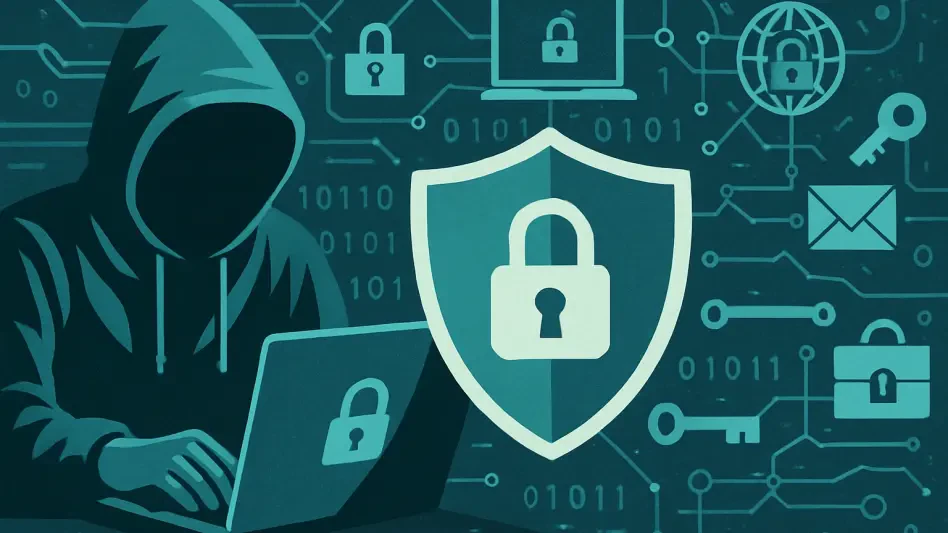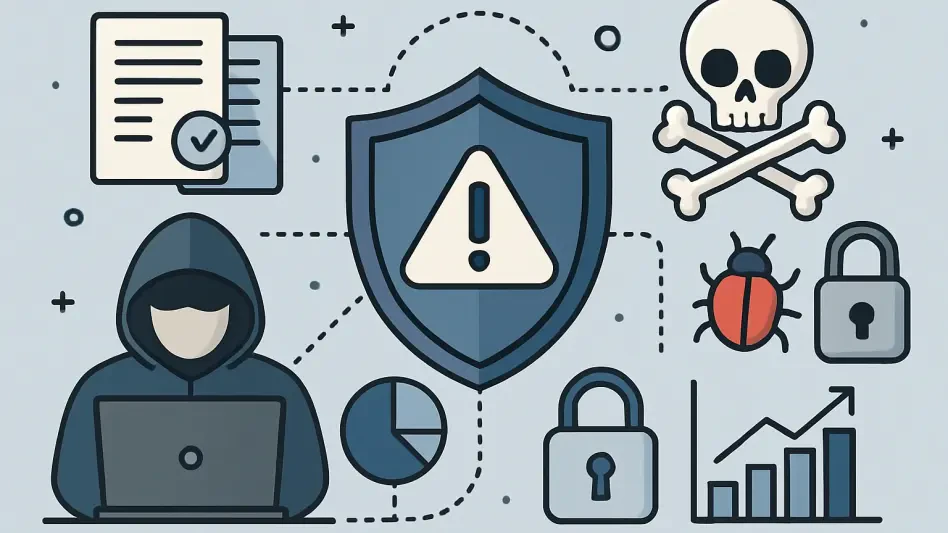In an era where cyber threats loom larger than ever, with attacks costing the global economy billions annually, a single piece of legislation stands as a critical shield for America’s digital infrastructure. The Cybersecurity Information Sharing Act of 2015 (CISA 2015), recently extended until January 30, 2026, through a Senate deal to avert a government shutdown, has become a linchpin in fostering collaboration between private companies and government entities. This roundup dives into diverse perspectives from industry leaders, policymakers, and cybersecurity professionals to explore why this law continues to be indispensable for national security. By gathering insights on its impact, challenges, and future implications, the discussion aims to highlight the stakes of maintaining robust information-sharing frameworks in an increasingly hostile digital landscape.
Unpacking the Significance of CISA 2015 Through Expert Views
Legal Protections as a Catalyst for Collaboration
A key strength of CISA 2015 lies in its liability protections, which shield companies from lawsuits, antitrust violations, and Freedom of Information Act disclosures when sharing cyber threat data. Many industry voices emphasize that these safeguards are essential for building trust between private entities and federal agencies. Without such legal cover, the fear of litigation or exposure of sensitive information would likely deter organizations from participating in vital intelligence exchanges.
Another angle often raised by cybersecurity strategists is the sheer volume of data shared under these protections. Programs like the Automated Indicator Sharing system have facilitated the exchange of millions of threat indicators among countless non-federal participants. This scale of collaboration, enabled by the law’s safe harbor provisions, has proven instrumental in identifying and mitigating risks before they escalate into full-blown crises.
However, not all feedback is unanimously positive. A notable dissenting opinion from a prominent senator highlights concerns about potential free speech implications tied to the law’s broad scope. This critique sparks a broader debate on striking a balance between enhancing security and safeguarding civil liberties, with some arguing that clearer boundaries might be needed to address these tensions.
Real-World Impact of Information Sharing
Beyond legal frameworks, the practical outcomes of CISA 2015 have garnered significant praise from security practitioners. Initiatives like the Joint Cyber Defense Collaborative have created actionable partnerships, allowing for real-time responses to emerging threats. Industry leaders often cite specific instances where federal guidance, enabled by this legislation, has directly prevented compromises and supported sanctions against foreign cybercriminals.
Cross-sector collaboration also stands out as a major achievement. Professionals from fields like financial services and retail note that the law has dismantled previous barriers, such as antitrust risks, enabling unprecedented data sharing across industries. This interconnected approach has helped uncover threat patterns that might have otherwise gone unnoticed, strengthening collective defenses.
Yet, some experts caution against over-reliance on current mechanisms. They point out that hesitation to share data, even with protections in place, could still obscure critical insights. This risk underscores the need for continuous engagement and trust-building to ensure that the collaborative spirit fostered by the legislation does not wane over time.
Evolving Threats and the Adaptability of CISA 2015
Addressing Modern Cyber Challenges
As cyber threats evolve with technologies like artificial intelligence and vulnerabilities in global supply chains, many in the cybersecurity community view CISA 2015 as a dynamic tool for modern defense. Analysts frequently highlight how the law’s framework remains relevant by supporting rapid information exchange, which is crucial for countering sophisticated attacks that exploit emerging tech.
Regional and sectoral nuances also play a role in shaping opinions. Some professionals advocate for expanding the law’s influence to drive innovation in areas like cross-industry threat intelligence, arguing that such efforts could set new standards for proactive defense. The adaptability of the legislation is often seen as a strength, though it also raises questions about whether it can keep pace with the accelerating complexity of digital risks.
A recurring concern among thought leaders is whether legal protections alone suffice in this new threat landscape. There is a growing sentiment that while CISA 2015 provides a solid foundation, broader policy updates may be necessary to address gaps posed by cutting-edge attack methods. This perspective pushes for a forward-thinking approach to ensure the law evolves alongside the threats it aims to combat.
Balancing Risks and Disclosure in Regulated Sectors
Highly regulated industries face a unique dilemma under CISA 2015, where sharing threat intelligence could expose operational weaknesses if protections are not airtight. Insights from security executives often reveal apprehension about potential shareholder lawsuits or unintended disclosures that might tip off adversaries. This fear shapes a cautious approach to collaboration in some sectors.
Further complicating the issue, many professionals warn of a chilling effect on public-private partnerships if legal safeguards were to lapse. Without the assurance of protection, legal departments might advise against sharing critical data, leading to delays in response times and diminished effectiveness of collective defense strategies. This concern is particularly acute for organizations handling sensitive customer information.
Speculation about future legislative or judicial adjustments also surfaces in discussions. Some industry voices suggest that tweaks to the law’s scope could redefine how protections are applied, ensuring they remain relevant amid shifting legal landscapes. This ongoing dialogue reflects a shared commitment to maintaining a balance between risk and the urgent need for disclosure.
Lessons Learned and Practical Takeaways
The extension of CISA 2015 until early 2026 has reinforced its role in enabling real-time threat intelligence exchange and disrupting cybercriminal networks. Cybersecurity specialists often stress the bipartisan and industry-wide support for the law as evidence of its value. This consensus highlights how integral the legislation has become to fostering a unified front against digital adversaries.
For organizations looking to maximize the benefits of this framework, actionable steps include leveraging government-backed programs to establish internal data-sharing protocols. Partnering with federal initiatives can enhance security postures and provide access to cutting-edge threat insights. Such proactive measures are seen as essential for staying ahead in a rapidly changing environment.
Additionally, businesses are encouraged to embed collaborative practices into their operations now, preparing for potential policy shifts down the line. Building resilience through strong networks and shared intelligence ensures that companies remain protected regardless of future legislative outcomes. This forward-looking mindset is often cited as a practical way to sustain momentum in cyber defense.
Reflecting on a Pivotal Framework
Looking back, the insights gathered from diverse cybersecurity stakeholders paint a vivid picture of CISA 2015 as a foundational pillar of national defense. The discussions underscored how liability protections and collaborative frameworks empowered organizations to tackle threats head-on, while also revealing nuanced challenges around legal risks and evolving attack methods. For those seeking to deepen their understanding, exploring resources on public-private partnerships or federal cybersecurity programs can offer valuable context. Moving forward, stakeholders are urged to advocate for permanent reauthorization of such legislation and invest in innovative defense strategies, ensuring that the nation’s digital borders remain secure against an ever-growing array of threats.








